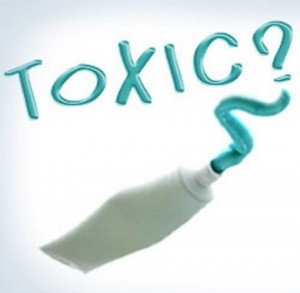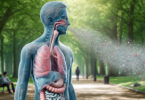By Dr. Mercola
Are You Taking These Unnecessary Health Risks?
Many of these habits are not only completely accepted by our society and typically viewed as risk free, but are extremely common as well.
There’s a good chance you’re probably engaging in at least one of the risks on this list, but after reading the truth about it, you may decide it’s just not worth it.
1. Holding a Cell Phone to Your Ear
As the use of cell phones and other wireless technologies have exponentially exploded over the past couple of decades, concerns about the health effects of such technology have increased as well. Today, we’re at a point of no turning back, as cell phone subscriptions are now estimated at 5 billion globally—that’s the majority of people on the planet!
A growing body of researchers have spoken out against the technology, warning that it may have serious biological side effects, not the least of which is an increased risk of brain tumors. Last year, the World Health Organization (WHO)/International Agency for Research on Cancer (IARC) issued a report admitting cell phones might indeed cause cancer, classifying radiofrequency electromagnetic fields as “possibly carcinogenic to humans” (Class 2B).i
The classification came in part in response to research showing wireless telephone use increases the risk for brain cancer.
An analysis from Sweden, published in Neurology & Neurophysiology,ii projected a very large increase in brain cancer incidence resulting from widespread mobile phone use beginning in approximately 15 years. The projections are based on well-established effects of this radiation on DNA. Specifically, that mobile phone use decreases the efficiency of the repair of mutated DNA and increases the rate of DNA mutations.
Earlier this year, Health Canada proposed adopting a precautionary principle approach and issued guidelines for limited cell phone use. Many other countries have already done so to some degree, including Russia, the UK, Israel, Belgium, Germany, India, Finland and France.
All the evidence points to the fact that current safety standards are completely inadequate. Our rapidly expanding wireless technologies must be properly evaluated, but on an individual level we simply cannot afford to wait. While some countries are beginning to invoke the precautionary principle, each and every individual can take it upon themselves to do the same, rather than wait for an official statement.
You can find my complete guidelines on how to limit your wireless exposure here.
2. Choosing a Shower Curtain Made Out of PVC
You know the smell that seeps out when you take a brand new plastic or vinyl shower curtain out of its package? That’s due to the polyvinyl chloride (PVC) it’s made out of. This is a significant source of exposure to chemicals known as phthalates, which are used as plasticizers in everything from vinyl flooring to detergents, hoses, raincoats, adhesives, air fresheners, and toys—and even in some soaps, shampoos, lotions and nail polish.
Phthalates are one of the groups of “gender-bending” chemicals causing males of all species to become more female. These chemicals have disrupted the endocrine systems of wildlife, causing testicular cancer, genital deformations, low sperm counts and infertility in a number of species, including polar bears, deer, whales and otters, just to name a few. Scientists believe phthalates are responsible for a similar pattern in humans as well, and they have been linked to:
| Impaired ovulatory cycles and polycystic ovary disease (PCOS) | “Decreased dysgenesis syndrome”: A syndrome involving cryptorchidism (undescended testicles), hypospadias (birth defect in which opening of urethra is on the underside of the penis instead of at the end), and oligospermia (low sperm count), and testicular cancer |
| Interference with sexual differentiation in utero | Enlarged prostate glands |
| Disturbed lactation | Numerous hormonal disruptions |
| Early or delayed puberty | Breast cancer and uterine fibroids |
Research conducted by the U.S. Centers for Disease Control and Prevention (CDC) discovered high levels of phthalates in all 289 adult Americans tested, and the levels of some phthalates in women of childbearing age exceeded the government’s safe levels set to protect against birth defects, leading scientists to conclude phthalate exposures are “much higher and more common than previously suspected.”iii
This is why it makes sense to choose a fabric shower curtain (or install glass doors) in lieu of a vinyl one – as well as take these other precautions to reduce your phthalate exposure as much as possible. They are a bit more expensive but it would make sense to get a glass shower door installed to+ replace them. You can typically do this for under $500.
3. Microwaving in Plastic
Plastics contain a slew of hormone-mimicking, endocrine-disrupting chemicals, like bisphenol-A (BPA), which is linked to cancer, premature puberty, heart disease and more. Even under normal conditions, such as drinking out of a plastic bottle, they can leach into your food and beverages. But heating them accelerates the process, releasing a larger amount of the dangerous chemicals into whatever you’re warming up.
Remember just because it is BPA-free doesn’t mean it isn’t loaded with other gender bending BPA-like chemicals. GreenMedInfowrote a nice recent review on this recently, revealing that many manufacturers the globe over have been switching to the equally toxic bisphenol known as Bisphenol S (BPS) in order to evade impending regulatory oversight, as well as to ride the “BPA-free” marketing gravy train by misleading the consumer into thinking their products are bisphenol free, which they are not.iv
Even BPA-free plastics leach endocrine-disrupting chemicals, so don’t let this label give you a false sense of security. Anytime you’re microwaving anything, use a glass or ceramic container (and don’t cover it in plastic wrap, either). Better yet, ditch your microwave entirely and use an oven or toaster oven when you need to reheat your food.
4. Flea and Tick Collars
Not only are flea and tick collars toxic to your pet, but did you know that you’re also exposed to the pesticides when you play with your dog or cat?
Children are particularly at risk, and may be exposed to pesticide residues at levels up to 1,000 times higher than the U.S. Environmental Protection Agency’s acceptable levels, posing a risk of cancer and damage to the neurological system.v The residues can remain on your pets’ fur for weeks, posing an unacceptable risk, particularly when there are many natural options available.
5. Running Your Humidifier
What’s wrong with running a humidifier? Assuming it’s used occasionally and kept clean, not a thing. But many people are less than diligent about cleaning them out, and this paves the way for bacteria to develop. The moist, warm environment of a humidifier is a breeding ground for bacteria and fungi, which travel out of the unit via a “toxic mist” that you later breathe in.
Research has shown that breathing in dirty mist from humidifiers can lead to lung problems, including infection, and humidifier use is actually associated with an increased risk of developing asthma in children.vi Keep in mind, also, that too much moisture in your air increases the development of mold, which is a toxin you don’t want to be breathing in on a daily basis.
If you choose to use a humidifier, do so sparingly, making sure humidity levels do not get too high. A hygrometer, which you can find at most hardware stores, can measure the amount of moisture in your home’s air so you can adjust your humidifier use accordingly. Some humidifiers also have a hygrometer built in.
You’ll also need to make sure you clean it often, at least once every three days using hydrogen peroxide to remove any film or mineral deposits. The water in the reservoir should be changed daily, and be sure the area around it (tabletops, windows, carpeting, curtains, etc.) are kept dry.
Typically many people would actually benefit from running a dehumidifier in the summer to remove excess humidity especially in the basement where high humidity levels can cause mold to grow.
6. Antibacterial Soap and Fluoride Toothpaste
Beyond helping keep your immune system optimized, washing your hands is your number one protection against the acquisition and spread of infectious disease. But you do not need to use antimicrobial soap to get the job done. Studies have shown that people who use antibacterial soaps and cleansers develop a cough, runny nose, sore throat, fever, vomiting, diarrhea and other symptoms just as often as people who use regular soaps.vii
Part of the reason for this is because most of these symptoms are actually caused by viruses, which antibacterial soaps can’t kill.
But even for symptoms like vomiting and diarrhea, which may be caused by bacteria, those who used regular soaps still had no greater risk than those who used antibacterial products. So, the rational conclusion is antibacterial soaps are completely unnecessary for the purpose of washing away bacteria.
A 2007 systematic review published in the journal Clinical Infectious Diseasesviii confirmed that antibacterial soap containing triclosan did not provide any additional benefit compared with a non-antibacterial soap. Triclosan, the active ingredient in most antibacterial soap and even in some toothpastes, not only kills bacteria, it also has been shown to kill human cells ix and act as an endocrine disrupter. Contributing to the creation of hardier, more resistant bacterial strains.
Using these products also contributes to the creation of hardier, more resistant bacterial strains and, as if that wasn’t enough, when triclosan mixes with the chlorine in your tap water, chloroform is formed, which the EPA has classified as a probable human carcinogen.
So please, avoid using antibacterial soaps and other products containing these hazardous ingredients. They’re just harming you, the environment, and adding to a significant public health problem. They also cost more. Instead, just use a gentle, chemical-free soap and a natural, fluoride-free toothpaste. Local health food stores typically carry a variety of natural soaps and other toiletries that will do the trick without harsh chemicals.
7. X-Ray Airport Scanners
The European Commission has banned X-ray body scanners that use “backscatter” radiation technology from airports, “in order to not risk jeopardizing citizens’ health and safety” – but they are still in use in the United States. Backscatter X-ray scanners expose your body to ionizing radiation, which causes cumulative DNA damage that can lead to cancer. Because the scanners’ X-ray beams are concentrated on your skin, not distributed throughout the volume of your entire body, there is concern that the dose to your skin could be dangerously high.
A letter written by five professorsx revealed that there has not actually been any verifiable scientific testing of the safety of airport scanners — and that the levels of radiation being used are likely much higher than the public has been led to believe.
These scientists believe that the high-quality images produced cannot possibly be obtained with the low levels of radiation described, and that the actual level may be 45 times higher than what the manufacturer is claiming.
Personally, as a very frequent air traveler, I ALWAYS opt-out of the x-ray scanner. Thankfully, I recently received TSA Certified Pre status so I don’t have to take off my shoes, belt or computer out of my case and can go through the old scanner, but this is only when I fly American Airlines for now, but should transfer to other airlines in the future.
However, even if the radiation dose is minute (and that’s a big IF), I’m not willing to risk my health by exposing my entire body to any avoidable dose on a regular basis. If you’re exposed to other forms of radiation through CT scans, mammograms and other medical procedures — and you’re also exposed to radiation when you travel by air — your exposure could easily reach dangerous levels, and this is why it makes sense to avoid unnecessary radiation exposures as much as possible.
I also take 8 mg of astaxanthin every day, which is believed to radically limit damage from ionizing radiation.
8. Colon Cleansing
While the idea of cleaning out your intestines using a colonic or another method sounds on the surface like it might be a good idea, you actually need a good growth of bacteria in your gut to ease digestion and voiding of waste. If you eat a healthy diet, which includes plenty of raw and fermented vegetables, your colon should be very healthy, and will naturally self-clean.
The problem with colon cleanses is that the procedure itself can cause complications, including infection from bacteria that is introduced into the colon, or accidental punctures made during the procedure, which would require surgery to fix and can be very serious.
Instead, I highly recommend using fermented vegetables and other fermented foods, which are a rich source of beneficial bacteria, therapeutically to heal and restore health in your gut. Experts recommend eating about a quarter to half a cup (2 to 4 oz) of fermented vegetables or other cultured food, such as raw yoghurt, with one to three meals per day. I personally consume about 8 ounces nearly every day, as I believe they are one of the healthiest superfoods for your gut available.
I know many colon hydrotherapists would disagree with the position above and clearly some people benefit from this process, but I do think allowing your body to optimize the process is better than doing it artificially for most.
9. Ready-Made Canned Infant Formula – Especially Soy Infant Formula
Many well-intentioned moms unknowingly add to their baby’s toxic load by feeding them contaminated, chemical-laden infant formulas (in plastic bottles) during their first months of life. The pre-mixed liquid formulas are typically packaged in cans that are lined with BPA, and this is actually one of the foods most likely to be contaminated with this developmental toxin.
Some of the greatest concern surrounds early-life exposure to BPA, which can lead to chromosomal errors in the developing fetus, triggering spontaneous miscarriages and genetic damage. Exposure to only 0.23 parts per billion of BPA is enough to disrupt the effect of estrogen in your baby’s developing brain.
It’s also important to avoid giving your child soy infant formula, as the high concentrations of manganese it contains can lead to brain damage in infants and altered behaviors in adolescents. Researchers have found that soybean plants lift up manganese in the soil and concentrate it, so that its use in soy-based infant formula can result in as many as 200 times the level found in natural breast milk. Experts believe that such high concentrations could pose a threat to the immature metabolic systems of babies up to 6 months of age.
The other significant issue is the estrogen in soy. A soy-fed baby receives the equivalent of five birth control pills’ worth of estrogen every day! These babies’ isoflavone levels were found to be from 13,000 to 22,000 times higher than in non-soy fed infants.
One of the best gifts you can give your child is to start out their life with a sound nutritional foundation, and the best way to do this is by breastfeeding.
While any amount of breastfeeding is better than none at all, it is clearly to your advantage, and best for your baby’s health, to breastfeed exclusively — meaning no other food or water is supplemented — for at least the first 6 months. Then, at the age of 6 or 9 months, you can begin to supplement with solid foods (while still continuing to breastfeed as well). If for some reason you’re not able to breastfeed, or you have adopted your baby, your next best option is to make a healthy infant formula using raw milk. You can find homemade formula recipes here.
Article Source
Article References

If you've found value in our articles, we invite you to support the release of our brand-new book, "Gratitude Practices for Kids: A Practical Guide for Adults to Instill a Spirit of Appreciation and Positivity in the Next Generation."
"Gratitude Practices for Kids" brings together over 25 innovative and accessible practices designed to enhance gratitude in everyday life. This comprehensive guide is backed by 17 scientific studies, ensuring each concept is grounded in research, underscoring our commitment to nurturing growth, emotional intelligence, and positive interactions between adults and children.
We encourage you to opt for the paperback version to celebrate this new release. Dive into its fresh pages away from digital distractions, allowing you to immerse yourself in the transformative practices it offers.
Over recent years, Wake Up World has faced significant online censorship, which has impacted our financial ability to operate. Moving into book publishing represents a strategic step to secure the ongoing funds needed to continue our mission. By purchasing Gratitude for Kids, you help us keep our content free and accessible to everyone, avoiding needing a paywall. With over 8,500 articles published in the last 13 years, we remain dedicated to keeping our valuable content open to all.









